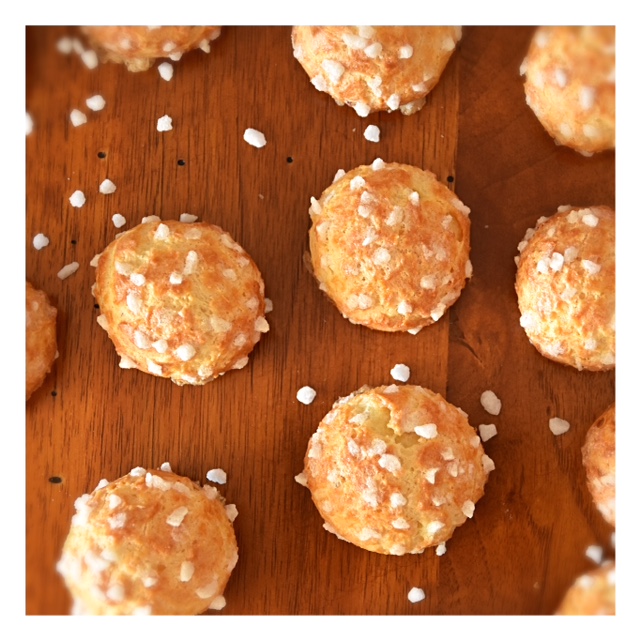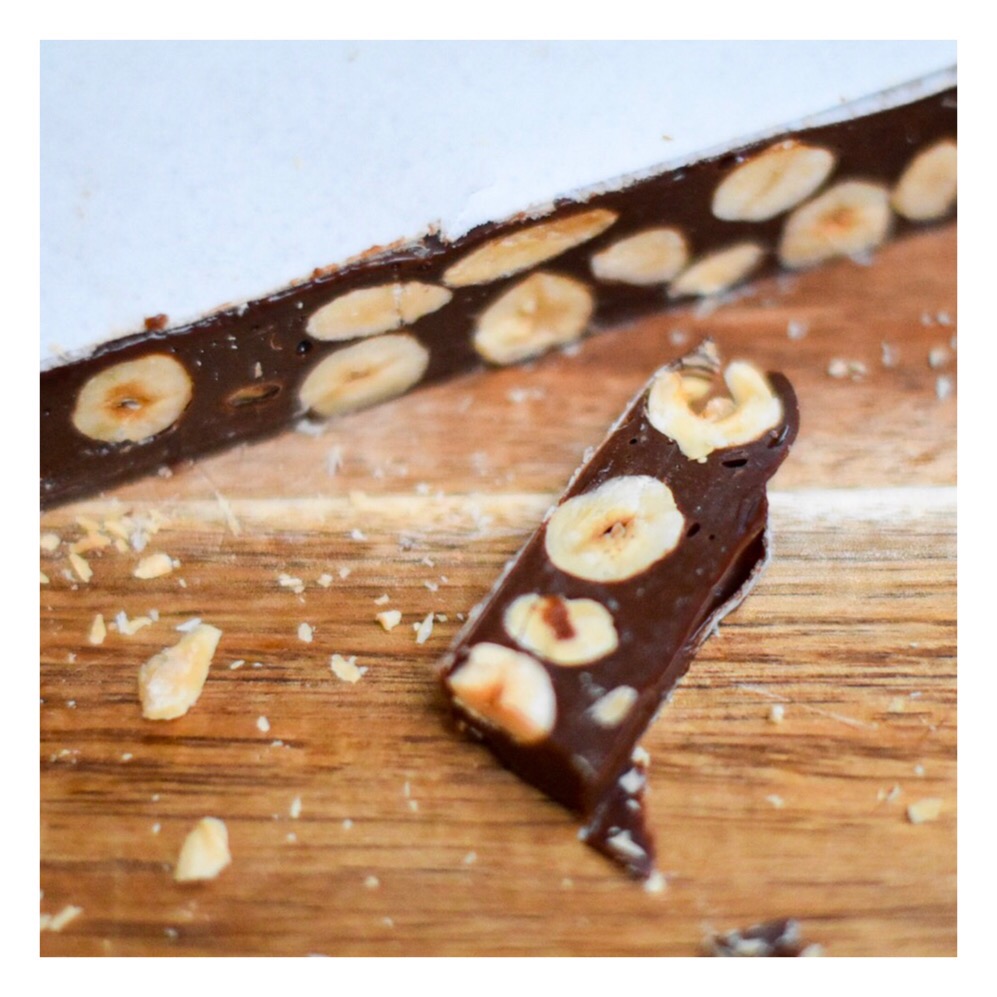Nougat (Philippe Conticini)

18 December 2017
Difficulty:
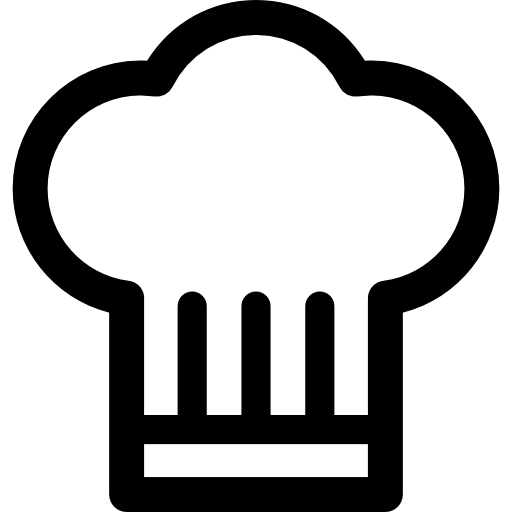



Christmas is coming, and thus the time to enjoy a lot of treats ;-) At my home at Christmas, in addition to the customary chocolates, there is always nougat, and this year I decided to take the plunge and make it myself (with a recipe from Philippe Conticini)! In the end, making nougat is not that complicated; the key word is organization. I'll explain everything below, and I recommend reading the entire recipe before starting to organize yourself as best as possible. I modified only one thing in the chef's recipe, which is the amount of nuts; I increased and distributed it differently, so you can adjust this part of the recipe to your liking (choose the nuts you prefer, add candied orange peels...). Finally, for the best taste result, I recommend using good honey with a lot of flavor (avoid acacia honey, for example, too bland). There you go, you just have to start making your homemade nougat!
Essential equipment: electric mixer and one (or even two) thermometers
Preparation time: 1h15-30 + resting (a few hours)
For 1.5 kg of nougat (a 30 to 35 cm stainless steel frame):
Ingredients:
112g egg whites
305g honey (for me, 200g flower honey and 105g lavender honey)
180g glucose
375g sugar
127g water
280g almonds
140g pistachios
110g hazelnuts
Wafer paper (optional)
Recipe:
Toast the nuts in the oven at 150°C for about twenty minutes. Then, rub them against each other to peel them (if some nuts still have their skin, it doesn't matter), then put them back in the hot but turned-off oven; they must be hot when you incorporate them into the nougat mix.
While the nuts are in the oven, I recommend preparing your slightly oiled stainless steel frame, placed on a tray covered with parchment paper, and cutting the wafer paper if you are using it (two squares the size of your stainless steel frame). I didn't have a frame of the right size, so I used a big frame and some rectangles.
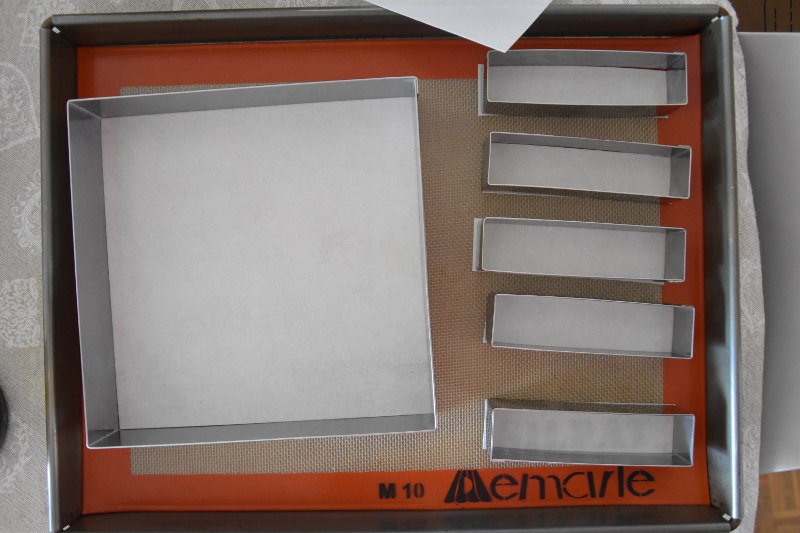
At this point, I recommend preparing all the pans/bowls before starting to cook anything; you'll be more at ease when making the recipe. You can also get out your hairdryer/blowtorch (don't panic if you don't have either, you can also dry out your nougat on a water bath, in which case prepare a large pot of water).
In the first pot, pour the water, sugar, and glucose. In the second one, place the honey. Finally, put the egg whites in your stand mixer bowl (or in a mixing bowl with an electric mixer ready to serve nearby).
The sugar syrup must cook to a temperature of 144°C, the honey to 122°C. Start by cooking the sugar syrup on low heat. When it reaches a temperature of 50°C, turn on the heat under the pot containing the honey. When the sugar syrup reaches a temperature of 130°C, start beating the egg whites, and at 144°C pour the syrup gradually over the frothy (but not stiff) egg whites, the same principle as an Italian meringue. When the sugar is incorporated, and the meringue is well inflated, pour the honey at 122°C in the same way over the egg whites.

Now comes the drying of the nougat paste; if you have a hairdryer or a blowtorch, that's perfect, otherwise use a water bath. The idea is to dry the nougat paste enough so that it is firm and does not run when cut, but without making it brittle. Depending on your hairdryer/blowtorch/water bath and whether you are using an electric mixer/a stand mixer with a whisk/a wooden spoon (in the case of the water bath), the drying time will vary, but generally, it takes between 20 and 40 minutes to reach the right consistency. To give you an idea, I used my stand mixer (Kenwood Chef Titanium) at speeds 3-4 (so medium speed) and a hairdryer (which I passed all around the stainless steel bowl, but also above so that the hot air stream directly touches the nougat paste), and the drying took about 35 minutes. Apparently, it takes less time with a blowtorch, and about the same or a little more in a water bath. To know if your nougat is at the right consistency, take a small portion, pass it under cold water, and this way you will have a good preview of the final consistency of the nougat when it has cooled; the paste should be relatively elastic and no longer stick to your fingers.
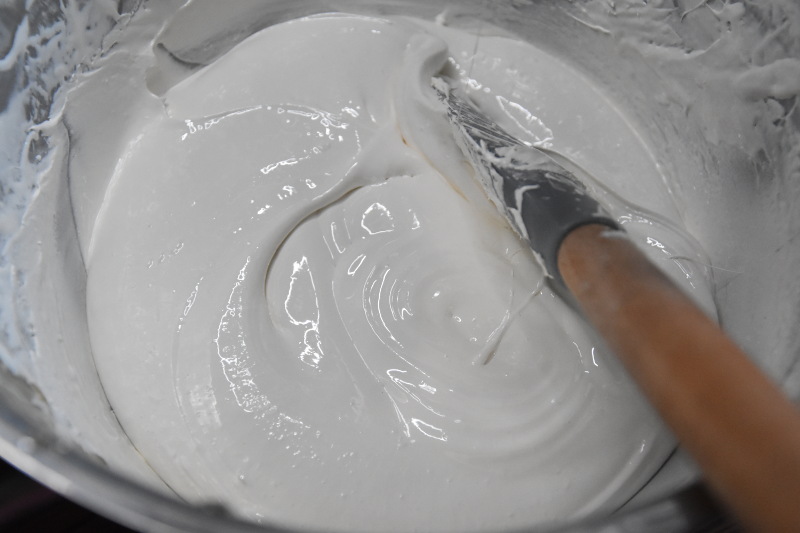
When the nougat paste is ready, you need to act quickly: immediately add the nuts (they must be hot (yes, I repeat myself, but it's important) to incorporate well into the nougat paste) while stirring well to have a homogeneous mixture. Then, pour the nougat immediately into your frame (or frames depending on the distribution you wish to make), with a wafer sheet on the bottom of the frame and another one you stick on top of the nougat by flattening it to have a smooth surface. If you don't have wafer paper, you can flatten the nougat between two sheets of parchment paper with a rolling pin.
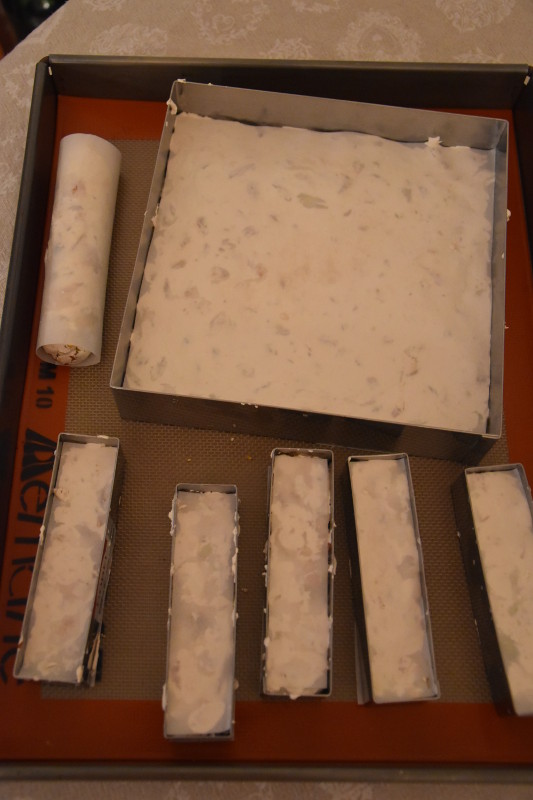
You see in the photo, with the nougat surplus, I made a "log" that I rolled in wafer paper; if you have no equipment, you can proceed this way, then cut slices :-)
Let the nougat cool and harden for a few hours, then take a large knife and heat the blade before unmolding and cutting the nougat as desired (into bars, small squares).

If you didn't use wafer paper, you can cut the nougat into small rectangles and wrap them in paper to have individual "candies".
And there you have it, you're ready to enjoy ;-)

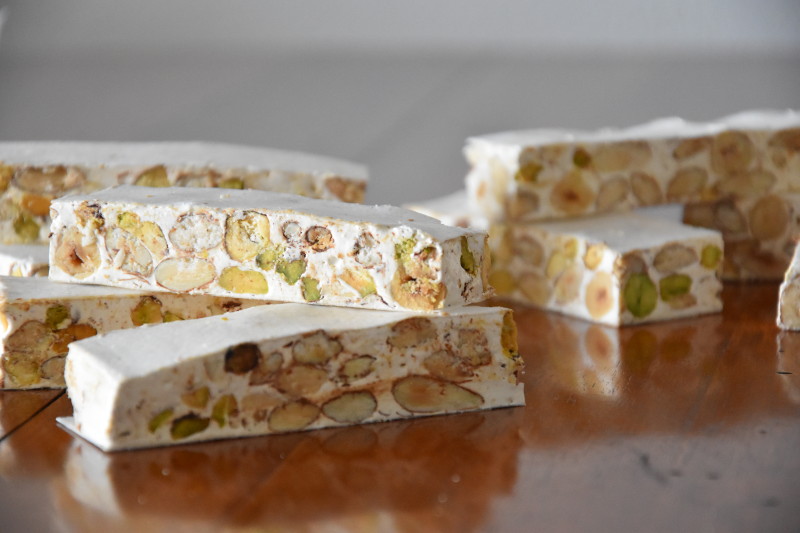

You may like
